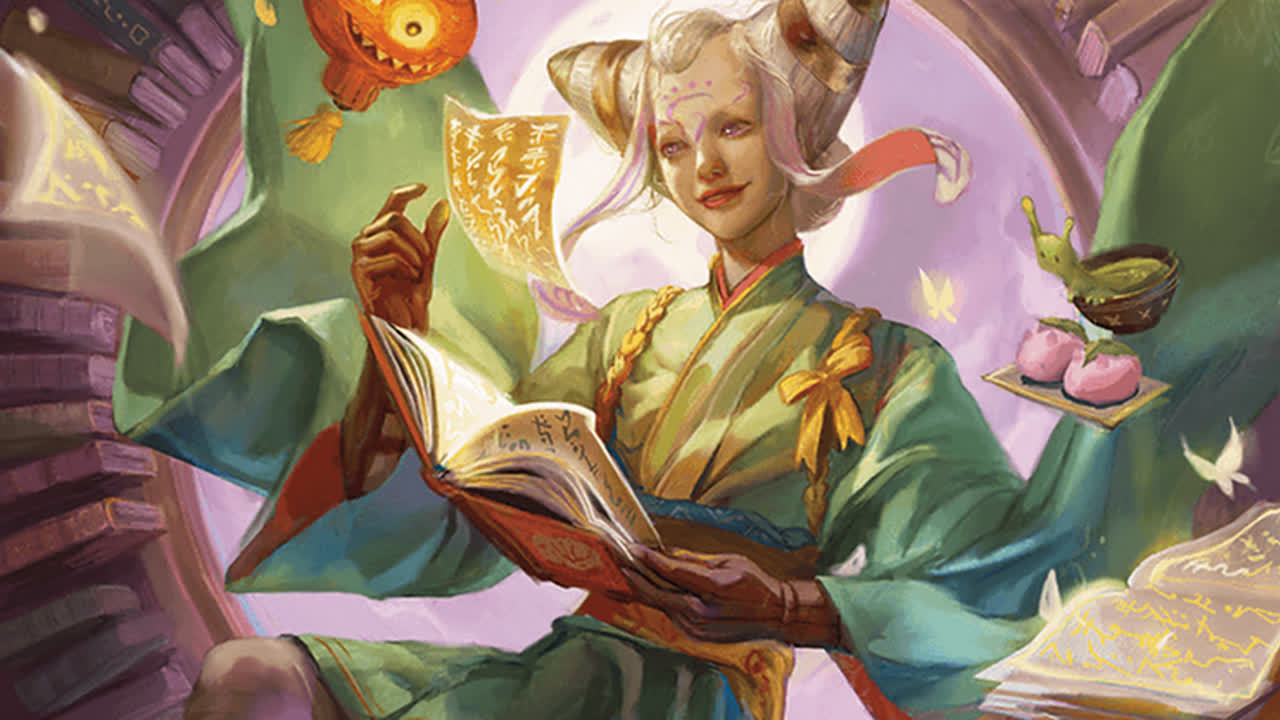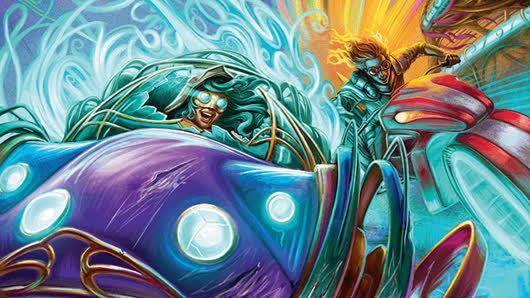After the release of The Lord of the Rings: Tales of Middle-earth, Dimir Control became the strongest deck in Historic thanks to the introduction of Orcish Bowmasters, which was an amazing tool for the deck. In fact, not only was Orcish Bowmasters incredibly strong at punishing our opponents for drawing cards, but within this archetype, it also worked as a winning condition. The main peculiarity of this deck was (and still is) to get access to Lurrus of the Dream-Den while playing a control deck. Lurrus can help us regenerate our winning conditions after they die, and this forces our opponent to take some suboptimal decisions when it comes to using removal spells or even while sideboarding. Generally speaking, control decks have access to Planeswalkers and sometimes to big creatures as well, but that's not the case for this deck. In fact, because of Lurrus, we can only play permanent cards with mana value 2 or less, and this is why our opponents might be forced to take suboptimal decisions. When it comes to sideboarding, removal spells are the first ones to be cut against a control deck, but that's not completely true against Dimir Control as the winning conditions of the deck (the one that I'm proposing today) are all creatures (either played, stolen, or conjured).
Among famous content creators, Mystmin was the streamer who played the deck the most and created different versions of it. Every version of the deck had some really specific numbers of copies for each card included in the deck. We are used to seeing lists with 4 copies of almost every card included in the deck, but I don't think that's the best way to build a control deck in a format where we have access to a huge number of cards as Historic is. In fact, Historic (and old formats in general) gives players the chance to build so many different decent decks. In such a complex context, it is essential to have access to many different answers as we could potentially encounter many different decks. For this reason, I think that it's almost impossible to find the best 75 cards to be played as even a little shift in the meta might change what we want to include in our deck. This deck is hard to build correctly and even harder to be played at a decent level. It's not a fast deck either, but I think it can get back its spot thanks to the introduction of Modern Horizons 3.
Despite the deck being the strongest one in Historic, it never became very popular and it's needed to understand why this happened.
The first reason, in my opinion, is that the deck is hard to be played and to be tweaked in a correct way.
The Lord of the Rings: Tales of Middle-earth was released in July 2023 and just 3 months later, on October 9, Orcish Bowmasters was nerfed to a point where it became unplayable not only in the deck but in the whole format as well. Without getting access to such a powerful two-mana creature spell, the deck fell apart. Good (cheap) winning conditions in the format were missing, and the deck just couldn't work anymore as the nerf of Orcish Bowmasters completely changed the meta. That was a good moment for the format but a sad one for (Lurrus) Dimir Control.
What changed since then?
Nothing has changed for the archetype in the past 8 months, but then Modern Horizons 3 was released, and two cards took my attention: Tamiyo, Inquisitive Student and Psychic Frog. Tamiyo, Inquisitive Student is a value engine for the deck and it costs just one mana, while Psychic Frog is a decent finisher and a draw engine as well. On top of that, they work well together as with both of them on the battlefield, flipping Tamiyo, Inquisitive Student becomes cheaper. The deck needs to always have access to many different options and drawing many cards helps towards this goal. The -3 loyalty ability of Tamiyo, Seasoned Scholar is really helpful in granting us resources while the +2 loyalty ability can really slow down decks such as Boros Energy.
What about the Boros Energy Matchup?
As mentioned in my previous article, Boros Energy right now is the most popular and strongest deck. Hence, Dimir Control needs to find effective answers to Boros Energy in order to be considered a really strong deck in the format. In the past, Dimir Control used to play both Languish and Extinction Event, but I feel like Languish might be a little too slow in the current meta. Toxic Deluge can be played one turn earlier at the cost of some life, making it more versatile, cheaper in terms of mana, but harder to play whenever we are low on life. Overall, if we consider the Boros Energy matchup, the amount of life to be paid in order to clear the board will hardly be higher than 2 life, and on turn 3 we should still have enough life to pay such a small amount.
The counterspells
Right now, I'm playing 4 copies of Archmage's Charm, 2 copies of Three Steps Ahead, and 0 copies of Make Disappear, but I feel like I could consider cutting 2 copies between Archmage's Charm and Three Steps Ahead in favor of 2 copies of Make Disappear. Getting access to a turn 2 counter is really relevant in the current meta, and the 3 copies of Change the Equation might not be enough.
Conclusions
Modern Horizons 3 has been released less than a month ago, and the meta is still adjusting to the new cards. In this context, it's still hard to have a clear idea about the power level of a deck like Dimir Control. The deck is really hard to build in the correct way, and I feel like my 75 cards can still be improved by a lot. If you are a new player or new to the format, I would not recommend you this deck since it requires taking so many different decisions on every turn. It's not an easy deck at all, and it needs a lot of practice, but it might be a solution to the current meta. If you like to play control, I feel like this might fit your playstyle more than Jeskai Control, which is the other control deck that is seeing some play in Historic at the moment. Feel free to change as many cards as you want, but keep in mind that you don't need too many win conditions and your job is to survive until your opponent runs out of resources.
















